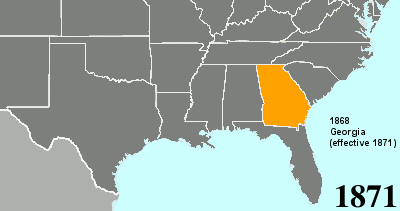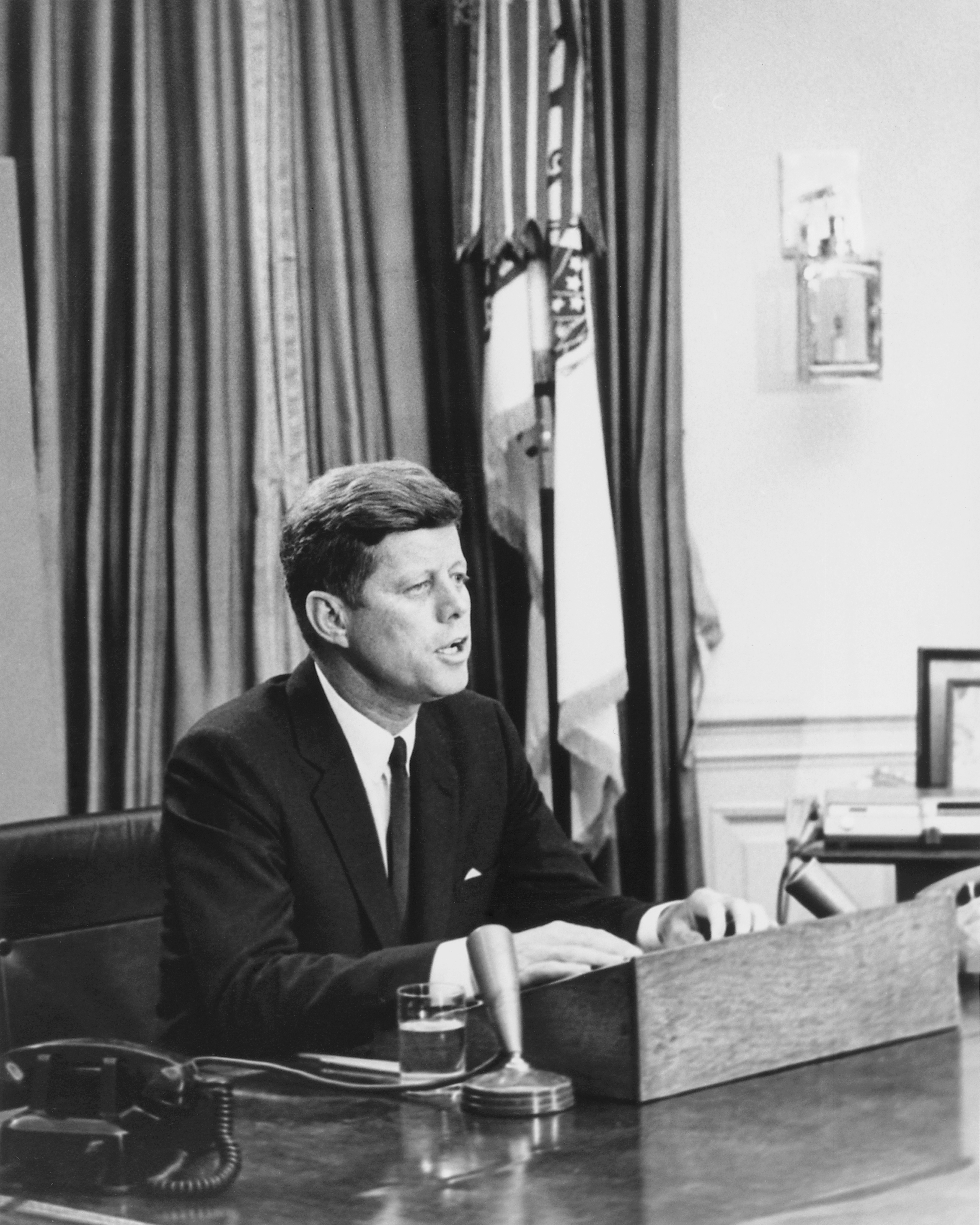|
Charles E. Chamberlain
Charles Ernest Chamberlain (July 22, 1917 – November 25, 2002) was a politician from the U.S. state of Michigan. Life and career Chamberlain was born in Locke Township, Michigan and after graduating from Lansing Central High School in Lansing, went on to earn a B.S. degree in 1941 from the University of Virginia in Charlottesville. He earned an LL.B. degree from the University of Virginia School of Law in 1949. During World War II, Chamberlain served in the United States Coast Guard, 1942–1946, and afterward in the United States Coast Guard Reserve, 1946–1977. He worked as a lawyer in private practice and as an Internal Revenue Service agent in the United States Treasury Department, 1946–1947. He was assistant prosecutor for Ingham County, Michigan in 1950 and city attorney of East Lansing and legal counsel to the Michigan State Senate judiciary committee in 1953 and 1954. He was prosecuting attorney for Ingham County, 1955–1956. In 1956, Chamberlain defeated inc ... [...More Info...] [...Related Items...] OR: [Wikipedia] [Google] [Baidu] |
Michigan
Michigan () is a U.S. state, state in the Great Lakes region, Great Lakes region of the Upper Midwest, upper Midwestern United States. With a population of nearly 10.12 million and an area of nearly , Michigan is the List of U.S. states and territories by population, 10th-largest state by population, the List of U.S. states and territories by area, 11th-largest by area, and the largest by area east of the Mississippi River.''i.e.'', including water that is part of state territory. Georgia (U.S. state), Georgia is the largest state by land area alone east of the Mississippi and Michigan the second-largest. Its capital is Lansing, Michigan, Lansing, and its largest city is Detroit. Metro Detroit is among the nation's most populous and largest metropolitan economies. Its name derives from a gallicization, gallicized variant of the original Ojibwe language, Ojibwe word (), meaning "large water" or "large lake". Michigan consists of two peninsulas. The Lower Peninsula of Michigan ... [...More Info...] [...Related Items...] OR: [Wikipedia] [Google] [Baidu] |
East Lansing, Michigan
East Lansing is a city in the U.S. state of Michigan. Most of the city lies within Ingham County with a smaller portion extending north into Clinton County. At the 2020 Census the population was 47,741. Located directly east of the state capital of Lansing, East Lansing is well-known as the home of Michigan State University. The city is part of the Lansing–East Lansing metropolitan area. History East Lansing is located on land that was an important junction of two major Native American groups: the Potawatomi and the Fox. By 1850, the Lansing and Howell Plank Road Company was established to connect a toll road to the Detroit and Howell Plank Road, improving travel between Detroit and Lansing, which cut right through what is now East Lansing. The toll road was finished in 1853, and included seven toll houses between Lansing and Howell. Michigan State University was founded in 1855 and established in what is now East Lansing in 1857. For the first four decades, the students and f ... [...More Info...] [...Related Items...] OR: [Wikipedia] [Google] [Baidu] |
American Legion
The American Legion, commonly known as the Legion, is a non-profit organization of U.S. war veterans headquartered in Indianapolis, Indiana. It is made up of state, U.S. territory, and overseas departments, and these are in turn made up of local posts. The organization was formed on March 15, 1919, in Paris, France, by a thousand officers and men of the American Expeditionary Forces (A. E. F.), and it was chartered on September 16, 1919, by the United States Congress. The Legion played the leading role in the drafting and passing of the Servicemen's Readjustment Act of 1944, commonly known as the " G.I. Bill". In addition to organizing commemorative events, members provide assistance at Department of Veterans Affairs (VA) hospitals and clinics. It is active in issue-oriented U.S. politics. Its primary political activity is lobbying on behalf of interests of veterans and service members, including support for benefits such as pensions and the Veterans Health Adm ... [...More Info...] [...Related Items...] OR: [Wikipedia] [Google] [Baidu] |
Congestive Heart Failure
Heart failure (HF), also known as congestive heart failure (CHF), is a syndrome, a group of signs and symptoms caused by an impairment of the heart's blood pumping function. Symptoms typically include shortness of breath, excessive fatigue, and leg swelling. The shortness of breath may occur with exertion or while lying down, and may wake people up during the night. Chest pain, including angina, is not usually caused by heart failure, but may occur if the heart failure was caused by a heart attack. The severity of the heart failure is measured by the severity of symptoms during exercise. Other conditions that may have symptoms similar to heart failure include obesity, kidney failure, liver disease, anemia, and thyroid disease. Common causes of heart failure include coronary artery disease, heart attack, high blood pressure, atrial fibrillation, valvular heart disease, excessive alcohol consumption, infection, and cardiomyopathy. These cause heart failure by a ... [...More Info...] [...Related Items...] OR: [Wikipedia] [Google] [Baidu] |
Renal Failure
Kidney failure, also known as end-stage kidney disease, is a medical condition in which the kidneys can no longer adequately filter waste products from the blood, functioning at less than 15% of normal levels. Kidney failure is classified as either acute kidney failure, which develops rapidly and may resolve; and chronic kidney failure, which develops slowly and can often be irreversible. Symptoms may include pedal edema, leg swelling, feeling tired, vomiting, loss of appetite, and confusion. Complications of acute and chronic failure include uremia, high blood potassium, and volume overload. Complications of chronic failure also include cardiovascular disease, heart disease, high blood pressure, and anemia. Causes of acute kidney failure include low blood pressure, blockage of the urinary tract, certain medications, rhabdomyolysis, muscle breakdown, and hemolytic uremic syndrome. Causes of chronic kidney failure include diabetic nephropathy, diabetes, high blood pressure, nephr ... [...More Info...] [...Related Items...] OR: [Wikipedia] [Google] [Baidu] |
Voting Rights Act Of 1965
The suffrage, Voting Rights Act of 1965 is a landmark piece of Federal government of the United States, federal legislation in the United States that prohibits racial discrimination in voting. It was signed into law by President of the United States, President Lyndon B. Johnson during the height of the civil rights movement on August 6, 1965, and United States Congress, Congress later amended the Act five times to expand its protections. Designed to enforce the Voting rights in the United States, voting rights guaranteed by the Fourteenth Amendment to the United States Constitution, Fourteenth and Fifteenth Amendment to the United States Constitution, Fifteenth Amendments to the United States Constitution, the Act sought to secure the right to vote for Race and ethnicity in the United States, racial minorities throughout the country, especially in the Southern United States, South. According to the United States Department of Justice, U.S. Department of Justice, the Act is consi ... [...More Info...] [...Related Items...] OR: [Wikipedia] [Google] [Baidu] |
Twenty-fourth Amendment To The United States Constitution
The Twenty-fourth Amendment (Amendment XXIV) of the United States Constitution prohibits both Congress and the states from conditioning the right to vote in federal elections on payment of a poll tax or other types of tax. The amendment was proposed by Congress to the states on August 27, 1962, and was ratified by the states on January 23, 1964. Southern states of the former Confederate States of America adopted poll taxes in laws of the late 19th century and new constitutions from 1890 to 1908, after the Democratic Party had generally regained control of state legislatures decades after the end of Reconstruction, as a measure to prevent African Americans and often poor whites (and following passage of the Nineteenth Amendment, women) from voting. Use of the poll taxes by states was held to be constitutional by the Supreme Court of the United States in the 1937 decision '' Breedlove v. Suttles''. When the 24th Amendment was ratified in 1964, five states still retaine ... [...More Info...] [...Related Items...] OR: [Wikipedia] [Google] [Baidu] |
Civil Rights Act Of 1968
The Civil Rights Act of 1968 () is a landmark law in the United States signed into law by United States President Lyndon B. Johnson during the King assassination riots. Titles II through VII comprise the Indian Civil Rights Act, which applies to the Native American tribes of the United States and makes many but not all of the guarantees of the U.S. Bill of Rights applicable within the tribes. (that Act appears today in Title 25, sections 1301 to 1303 of the United States Code). Titles VIII and IX are commonly known as the Fair Housing Act, which was meant as a follow-up to the Civil Rights Act of 1964 (this is different legislation than the Housing and Urban Development Act of 1968, which expanded housing funding programs). While the Civil Rights Act of 1866 prohibited discrimination in housing, there were no federal enforcement provisions. The 1968 act expanded on previous acts and prohibited discrimination concerning the sale, rental, and financing of housing based on ... [...More Info...] [...Related Items...] OR: [Wikipedia] [Google] [Baidu] |
Civil Rights Act Of 1964
The Civil Rights Act of 1964 () is a landmark civil rights and labor law in the United States that outlaws discrimination based on race, color, religion, sex, and national origin. It prohibits unequal application of voter registration requirements, racial segregation in schools and public accommodations, and employment discrimination. The act "remains one of the most significant legislative achievements in American history". Initially, powers given to enforce the act were weak, but these were supplemented during later years. Congress asserted its authority to legislate under several different parts of the United States Constitution, principally its power to regulate interstate commerce under Article One (section 8), its duty to guarantee all citizens equal protection of the laws under the Fourteenth Amendment, and its duty to protect voting rights under the Fifteenth Amendment. The legislation was proposed by President John F. Kennedy in June 1963, but it was op ... [...More Info...] [...Related Items...] OR: [Wikipedia] [Google] [Baidu] |
Civil Rights Act Of 1960
The Civil Rights Act of 1960 () is a United States federal law that established federal inspection of local voter registration polls and introduced penalties for anyone who obstructed someone's attempt to register to vote. It dealt primarily with discriminatory laws and practices in the segregated South, by which African Americans and Mexican-American Texans had been effectively disenfranchised since the late 19th and start of the 20th century. This was the fifth Civil Rights Act to be enacted in United States history. Over an 85-year period, it was preceded only by the Civil Rights Act of 1957, whose shortcomings largely influenced its creation. This law served to more effectively enforce what was set forth in the 1957 act through eliminating certain loopholes in it, and to establish additional provisions. Aside from addressing voting rights, the Civil Rights Act of 1960 also imposed criminal penalties for obstruction of court orders to limit resistance to the Supreme Court' ... [...More Info...] [...Related Items...] OR: [Wikipedia] [Google] [Baidu] |
Civil Rights Act Of 1957
The Civil Rights Act of 1957 was the first federal civil rights legislation passed by the United States Congress since the Civil Rights Act of 1875. The bill was passed by the 85th United States Congress and signed into law by President Dwight D. Eisenhower on September 9, 1957. The Supreme Court's 1954 ruling in the case of '' Brown v. Board of Education'' brought the issue of school desegregation to the fore of public attention, as Southern Democratic leaders began a campaign of " massive resistance" against desegregation. In the midst of this campaign, President Eisenhower proposed a civil rights bill designed to provide federal protection for African American voting rights; most African Americans in the Southern United States had been disenfranchised by state and local laws. Though the civil rights bill passed Congress, opponents of the act were able to remove or weaken several provisions via the Anderson–Aiken amendment and the O'Mahoney jury trial amendment, sign ... [...More Info...] [...Related Items...] OR: [Wikipedia] [Google] [Baidu] |
Eighty-fifth United States Congress
The 85th United States Congress was a meeting of the legislative branch of the United States federal government, composed of the United States Senate and the United States House of Representatives. It met in Washington, D.C. from January 3, 1957, to January 3, 1959, during the fifth and sixth years of Dwight Eisenhower's presidency. The apportionment of seats in the House of Representatives was based on the Seventeenth Census of the United States in 1950. Both chambers had a Democratic majority. To date, this is the earliest Congress with a member still living. Major events * January 5, 1957: President Eisenhower announced the Eisenhower Doctrine in a special message to Congress * January 20, 1957: Inauguration of President Dwight D. Eisenhower for a second term * August 21, 1957: President Eisenhower announced a 2-year suspension of nuclear testing * August 28, 1957: Senator Strom Thurmond set a record for the longest filibuster with his 24-hour, 18-minute speech again ... [...More Info...] [...Related Items...] OR: [Wikipedia] [Google] [Baidu] |

.jpg)





